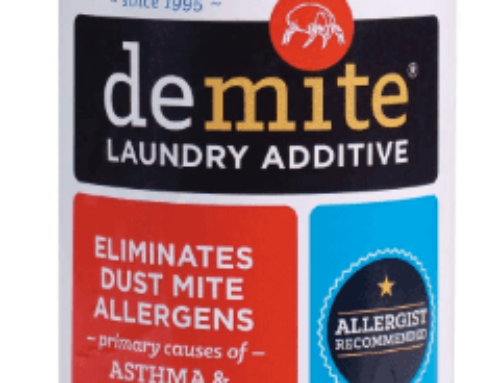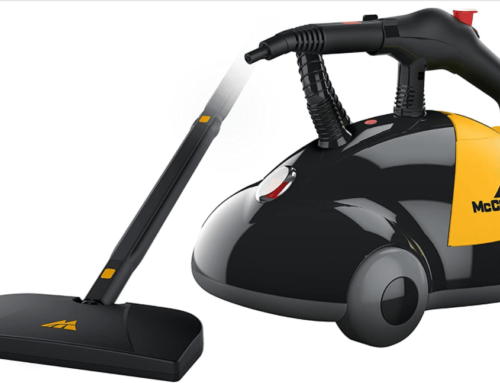Table of Contents
Most people are oblivious to the presence of dust mites in their home. After all, these tiny pests are microscopic and cannot be seen by naked eyes. It may seem preposterous that dust mites can actually lead to serious health complications that put one in life-threatening situations.
But before you play down the threat of dust mites, you’ll want to learn how these tiny pests are not as harmless as they seem.
What Are Dust Mites?
Dust mites are arachnid creatures that are present in most households. They feed on dead skin flakes and thrive in a humid, warm environment. Specifically, dust mites grow optimally in a temperature between 68 to 77 degree Fahrenheit and a humidity of 70%-90%.
The conditions for dust mites growth is easily met, which is why dust mites are found abundant in mattresses, carpets and upholsteries of many households. Dust mite infestation is a prevalent issue in as many as 80% of homes in the US, according to Lung.org.
Unlike bed bugs, dust mites don’t bite. Therefore, you won’t notice their presence at home if you’re not sensitive to dust mite allergens.
Why Dust Mites Can Be A Serious Health Hazard
Dust mites are quite harmless, except for the allergen presence in their body and faeces. It isn’t hard for dust-mite faecal pellets, which are about 20 microns in size, to go airborne. Just sitting on your bed can send thousands of tiny allergen-filled particles into the air.
The allergen can trigger various symptoms in people who are highly allergic. My son was on the receiving end of brutal episodes of dust mite allergies when he was 4. Amongst some of the symptoms that he developed was teary/red eyes, sneezing, nasal inflammation, and coughing.
When you’re allergic to dust mites, the symptoms don’t subside quickly. As long as the allergens are present in huge numbers, the symptoms persist, and in some cases, aggravate the conditions.
According to the American College of Allergy, Asthma and Immunology, dust mites is one of the major causes of asthma. Children, particularly have a high chance of developing asthma when exposed to dust mite allergen.
You’ll want to watch out for symptoms of wheezing, breathing difficulty and chest tightness, as it could be a warning that the allergic symptoms have taken a toll for the worse. If you’re asthmatic, exposure to dust mite allergen may aggravate your conditions.
Asthma attack must be taken seriously. If left untreated, it can possibly kill. If you’re developing allergic symptoms, you’ll need to consult a doctor. Never underestimate how dust mites could potentially devastate your health.
How To Get Rid Of Dust Mites In Your Home
It’s impossible to remove every single dust mites in your home. They breed quickly when the condition is right and could nest in different locations. However, it’s possible to bring down their numbers to a level that doesn’t trigger allergic symptoms.
There are a few ways to go about that.
1. Use An Air Purifier
Placing an air purifier near the bed helps to remove dust mites allergen from the air. Choose an air purifier that comes with a HEPA filter to keep the dust mites allergen safely trapped in the filter.
2. Use A Vacuum Cleaner
Most of the mites are found in the mattress. You’ll want to pay attention to keeping the mattress free from dust mites. One way to doing that is to use a special handheld UV vacuum that’s engineered for dust mite removal. The UV vacuum has a mechanical beater that drives dust mites to the surface, and a powerful suction that removes them from the surface.
3. Kill Dust Mites With Heat
Dust mites are killed instantly when exposed to a temperature beyond 131 degrees Fahrenheit. Therefore, it’s great to bring in a steam cleaner and start steaming mattress, upholsteries and places that could potentially host dust mites.
Also, you’ll want to consider washing bedding with hot water or turn up the temperature on the dryer. It’s proven to kill the mites that have got their way onto the fabric.
4. Get Rid Of Carpets
Ideally, you don’t want any carpets in your home if you’re allergic to dust mites. Carpets are perfect hiding spots for dust mites and it’s hard to remove mites deeply entrenched within. If you insist on keeping the carpets, the next best alternative is to clean them regularly with a carpet cleaner.
5. Dehumidify Your Home
To prevent dust mite growth, you’ll want to disrupt the environmental factors that are optimized for them. Humidity is the easiest way to control without causing discomfort for humans. Bathrooms often have high humidity and the moisture could escape to adjacent rooms. Installing an extractor fan could help.
Alternatively, you can place a dehumidifier for precise control of the humidity level in your home.
Bottom Line
It’s a case of better be safe than sorry when it comes to dust mites. While it’s possible to be unaffected by dust mites, things go south pretty quickly for those who are highly allergic to dust mite allergen. Keeping your home clean is the least you could do to prevent dust mites from wrecking your life.




Leave A Comment